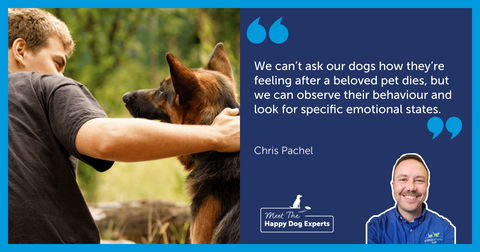
How to keep my dog active and entertained
Our routines are likely to change due to the current situation which may mean our dog's exercise pattern is not the same. It could be shorter, more restricted, they may not go to doggy day care like they normally do and will be spending more time at home.
It is still possible to keep them entertained and tire their brains out, we just have to be more creative and think of new ways to do this. To help you, the ADAPTIL team has come up with a list of activities you can do at home:
Puzzle / activity feeders and toys
These are great ways to keep your dog amused and active. Kong toys, Lickimat, Snuffle Mat are all examples of ways to keep your dog entertained and busy. These are designed to entertain your dog for a good period of time and wear them out. Plus, anything that encourages your dog to lick is self-soothing for them.
Teach new tricks & behaviours!
New tricks can be fun for your dog to learn but also to keep them mentally stimulated and to help the owner-dog bond as you'll spend time together and learn from one another. You can make it fun and encourage good behaviours from your dog.
Ideas:
- Lie down
- Roll over
- Spin
- Fit nose in or rest your head
- Leave
- Paw
- High five
- Sit & Wait
If you are teaching your dog new tricks, we want to see ! Share your stories on facebook with us (#adaptilathome) !
Food games
These can be an enticing way to encourage your dog to be a bit more active for their food, both mentally and physically. Swap their food bowl for a food puzzle toy or scatter their food in your garden.
You could even put their food inside empty plastic bottles or cardboard boxes that have small holes in. Hide it in towels or snuffle mats, around a room or the house and then let your dog explore and find them by using their nose. You can use their normal kibble if they eat dry food if you are worried about overfeeding. Scatter feeding, is fun outside in long grass as they'll have to use their nose and mind.
Long lasting chews
Chewing isn't only a good distraction but it can help dogs lower their anxieties or excitement (or arousal). It is really important for dogs to chew and also have some sort of outlet to reduce stress and help calm them. You can purchase a long-lasting chew or consider using a frozen Kong (filled with peanut butter, frozen chicken stock or yoghurt) to help them relax, chewing and licking are both self-soothing for dogs.
Slow walking
Going on a slow dog walk and having lots of breaks or stops allows your dog to explore, smell the fascinating scent enriched environment and entertain themselves. There is so much to investigate and you can encourage this by dropping their favourite toys or treats. You can also use this time to practice good behaviours such as loose lead walking, reward your dog for voluntary check ins, being calm and collected around other people or dogs. Keep yourself interesting so your dog will come back to you.
Nervous behaviours
During this time at home you could work on some of the nervous behaviours your dog shows:
1) Habituation or desensitisation - An example of habituation training could be by using tv or playing youtube videos that have sounds your dog doesn't like (on a very quiet setting) or unfamiliar sounds (also good to start on a quiet volume) and then build this up.
Firework desensitisation training is great to start now as we are far away from the start of the season. Reward the dog for any calm or normal behaviours while the noises are playing and help them by providing a safe haven and comfy area for them to relax in. Don't set them up for failure, always start quietly and slowly and only increase the volume when you know they'll be ok with this and when they are already in a relaxed state (but not asleep to avoid a startle).
2) Socialisation - Why not get them used to things that may be scary or unfamiliar. Raid your wardrobes to find anything novel or unusual they could come across. W.g. high viz jackets, hats, glasses or even masks. Always reward relaxed behaviours and then ensure the dog remains in that position. Use this time to help your dog and train them to get used to something they find scary.
If visitors are a worry for your dog, if there's more than one of you at home, you can practice the knock or doorbell ringing by one of you going outside and pretending to be a visitor to get them used to the sounds - remember to reward the dog for being calm.
3) Husbandry training - try to think about any training that would help your dog when you go back to work, such as settling on their bed/crate, overtime build up distance and time away.
Consider training your dog to become more accustomed to handling and grooming. For example, you could desensitise your dog to having their feet handled or ears examined.
If you are staying home with your dog, share your stories on facebook with the #adaptilathome with us !
Stay safe!
The ADAPTIL team
#adaptilathome








































